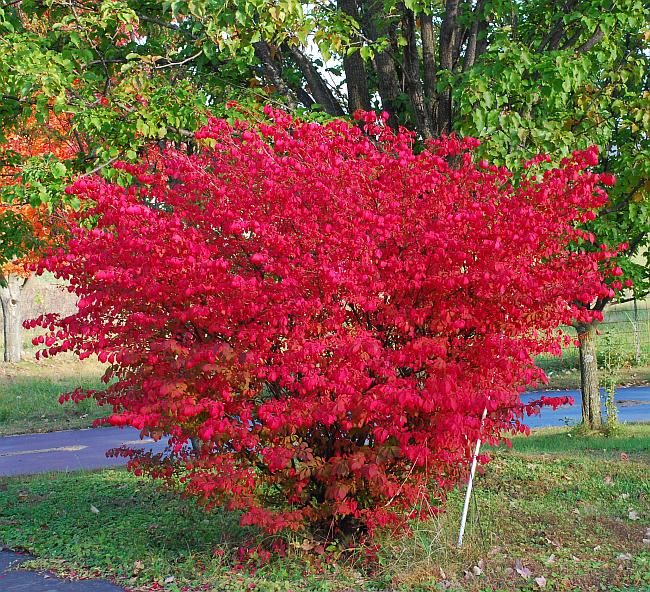Euonymus alatus (Thunb.) Siebold
Burning Bush, Winged Euonymus

Introduced
CC = *
CW = 5
MOC = 18
© SRTurner
Euonymus alatus (Thunb.) SieboldBurning Bush, Winged Euonymus | |
 |
Introduced CC = * CW = 5 MOC = 18 |
© SRTurner |
|
Family - Celastraceae Habit - Shrub with spreading to ascending branches, 1-3 m tall, sometimes spreading by runners. Stems - Twigs green, sometimes 4-angled with 2-4 conspicuous corky wings 1-4 mm wide.
Leaves - Opposite, simple, short petiolate, thin to relatively thick but herbaceous, deciduous. Petioles to 2 mm long. Leaf blades 2-6 cm long, 1-2 cm wide, elliptic to obovate, narrowed at the base, narrowed or tapered to a usually sharply pointed tip, the margins finely and usually sharply toothed, the surfaces glabrous or with scattered hairs on the lower surface midrib.
Inflorescences - Numerous axillary clusters of 2 or 3 or solitary flowers.
Flowers - Sepals 4, 0.5-1.0 mm long. Petals 4, 2-3 mm long, 2-3 mm wide, broadly spatulate with a minute, stalklike base, greenish yellow, the margins irregular.
Fruits - Fruits 6-8 mm long, 2-4-lobed their entire length, the valves smooth, dark brown to dull purple at maturity. Seeds usually only 1 or 2 per fruit, 4.0-4.5 mm long.
Flowering - April - June Habitat - Forests, streambanks, disturbed areas. Widely cultivated and sometimes escaping. Origin - Native to Asia. Lookalikes - Vegetatively resembles E. atropurpureus, E. americanus, and other members of the genus. Fertile branches are relatively easily distinguished. Other info. - This shrub is extensively cultivated for its brilliant fall foliage, which gives rise to the "burning bush" moniker. Because it frequently escapes cultivation and spreads into wild areas, it is not the best landscaping choice for those interested in conservation and preservation of Missouri's natural areas. Escapes have formed scattered populations throughout the eastern half of the U.S., though the plant is currently not particularly common in the wild. Photographs taken near Labadie, Franklin County, MO, 10-31-2008, 4-30-2021, and 10-31-2021 (SRTurner). |